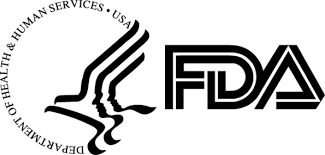Rethinking OR routines reduces waste, costs while protecting environment

Editor's Note For some surgeons, treating patients goes hand-in-hand with healing the environment. Consider an April 23 report in Medical Xpress. Detailing sustainability efforts at Chicago’s Rush University Medical Center by pediatric surgeon Ami Shah, MD, and her colleague Brian Gulack, MD, the article showcases how rethinking everyday surgical routines…
Borescope inspections reveal widespread contamination in lumened surgical instruments

Editor's Note Conventional cleaning protocols fail to remove visible soil and debris from lumened surgical instruments, raising urgent concerns about patient safety and sterilization efficacy. That’s the central finding of a study published February 11 in The American Journal of Infection Control, which used borescopes to inspect the lumens of…
FDA issues early alerts for intravascular catheters

Editor's Note The US Food and Drug Administration (FDA) warned of safety risks resulting from manufacturing issues with two varieties of intravascular catheter—Conavi Medical’s Novasight Hybrid line and BD’s PowerPICC intravascular devices—in separate early alerts April 18. In one reported incident, the sheath of a Novasight Hybrid catheter—a device used…
Bye-bye, SSI: Nurse-led decolonization protocol pays off

Imagine completely eliminating surgical site infections (SSIs) without significantly disrupting perioperative workflows. At Magic Valley Regional Medical Center (MVMC), a mid-sized community hospital in Twin Falls, Idaho, a nurse-led pilot project accomplished just that for breast and colorectal surgeries. As for other procedures, overall infection rates are down by nearly…
Literature review: Endoscope disinfection failures highlight need for stronger sterilization practices

Editor's Note High-level disinfection (HLD) fails to reliably eliminate harmful microbes from flexible endoscopes in real-world healthcare settings, according to a review of endoscope processing effectiveness published April 8 in the American Journal of Infection Control. The review highlights routine breaches in cleaning protocols and links contaminated endoscopes to numerous…
Study: MRI contrast agent causes harmful metal buildup in some patients

Editor's Note New research offers a potential explanation for why some patients retain toxic metals long after undergoing an MRI. Published in the journal Magnetic Resonance Imaging, the findings show that gadolinium contrast agents used in MRI scans may react with common dietary compounds to form harmful metal nanoparticles in…
Medication vial coring incidents prompt patient safety concerns
Editor's Note Safety organizations are raising concerns amid increased reports of improper needle use causing vial coring, leading to potential contamination and patient risk. Published April 4 by the Anesthesia Patient Safety Foundation (APSF) and ECRI/Institute for Safe Medicine Practices (ISMP), the alert offers interim guidelines to reduce risks associated…
Study: Arthroplasty implants linked to metal accumulation in cerebrospinal fluid

Editor's Note Arthroplasty implants may release metals that accumulate in the central nervous system (CNS), potentially contributing to neurotoxic effects, according to a study published March 28 in JAMA Network Open. Researchers found that patients with large joint replacements had significantly higher levels of cobalt, chromium, titanium, niobium, and zirconium…
Hospitals make steady gains in patient safety amid persistent challenges

Editor's Note Hospitals are making measurable strides in patient safety and workforce resilience, but sustained focus is needed to maintain progress, according to a March 13 report in Chief Healthcare Executive. The article focuses on a new analysis from the American Hospital Association (AHA) and Press Ganey. Based on responses…
Study: Sleep-deprived nurses face higher infection risk

Editor's Note Nurses who don’t get enough sleep face a significantly higher risk of common infections, including colds, pneumonia, and bronchitis, according to a March 10 report from HealthDay. The article focuses on a study published in Chronobiology International finding that sleep debt—particularly among night shift nurses—weakens immune defenses, potentially…

 Free Daily News
Free Daily News